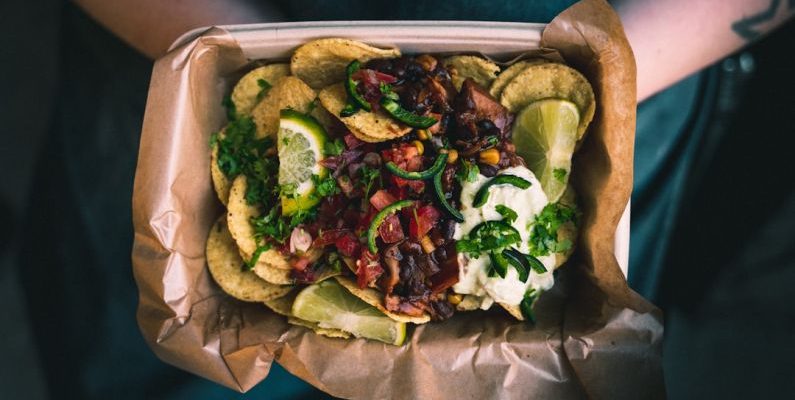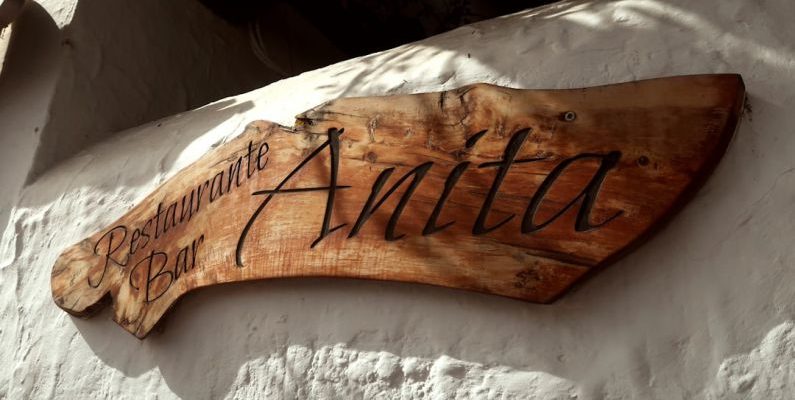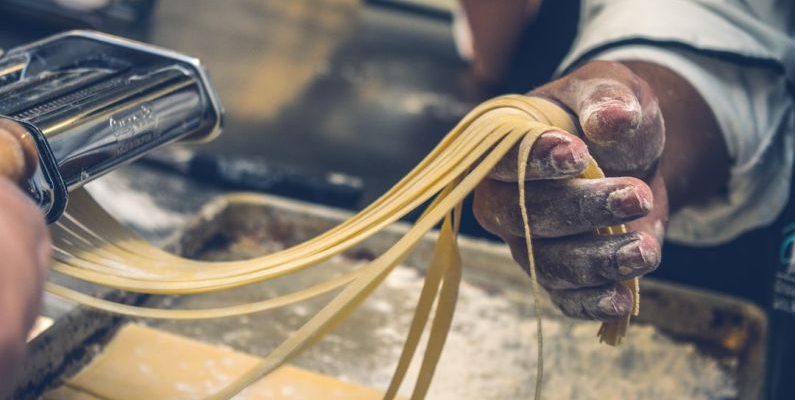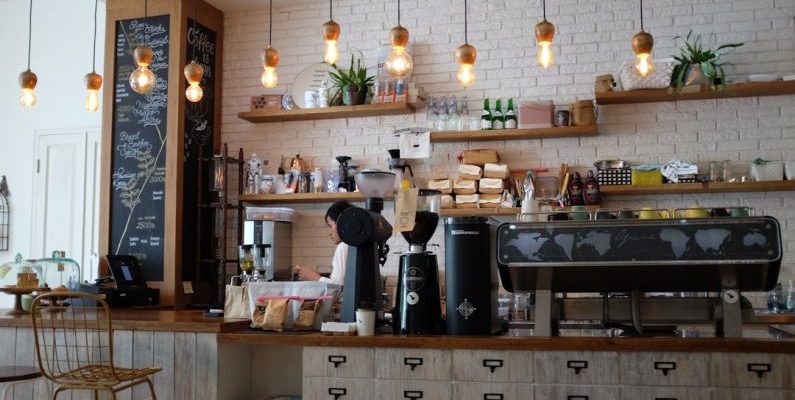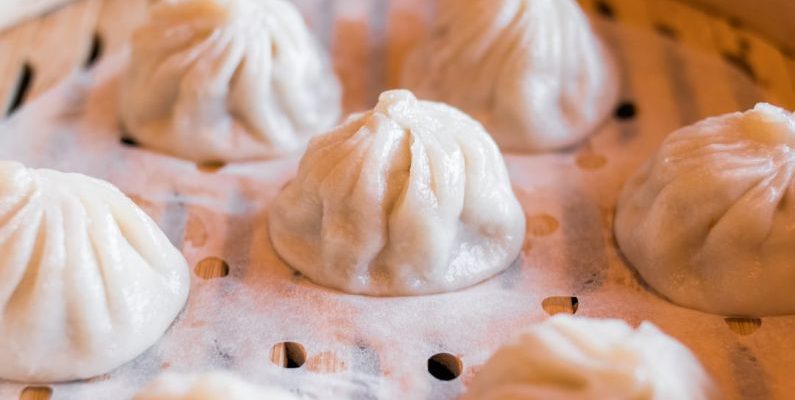Tea is more than just a beverage; it is a cultural cornerstone in many countries around the world. From elaborate tea ceremonies to casual afternoon tea gatherings, the significance of tea goes beyond its taste and aroma. Let's explore how tea has become an integral part of the cultural fabric in various countries.
Global Cuisine
Barbecue, a culinary tradition deeply rooted in cultures around the world, offers a fascinating glimpse into the diversity of cooking techniques and flavors across different societies. From slow-smoked meats in the southern United States to skewered kebabs in the Middle East, traditional barbecue methods vary widely but share a common thread of bringing people together over delicious, smoky fare. Let's explore some of the unique barbecue techniques employed in various cultures, showcasing the rich tapestry of flavors and traditions that make barbecue a beloved culinary art form worldwide.
### American Barbecue: Low and Slow
When it comes to barbecue, few places are as renowned as the southern United States. In regions like Texas, the Carolinas, and Kansas City, barbecue aficionados swear by the "low and slow" method of cooking meat. This involves smoking cuts of meat—usually pork or beef—over a low heat for several hours, allowing the flavors to develop and the meat to become tender and juicy. Each region has its own signature style of barbecue sauce, ranging from tangy vinegar-based sauces in the Carolinas to sweet and sticky molasses-based sauces in Kansas City.### Argentine Asado: The Art of Grilling
In Argentina, barbecue—or asado, as it is known locally—is a social event that revolves around the ritual of grilling meat over an open flame. Argentine asado typically features an array of meats, including cuts like chorizo, morcilla (blood sausage), and various cuts of beef such as asado de tira (short ribs) and vacío (flank steak). The meats are seasoned simply with salt before being grilled over a wood fire, imparting a smoky flavor that is quintessentially Argentine. Asado is not just a meal but a cultural experience that brings friends and family together to enjoy good food and company.### Korean Barbecue: Tabletop Grilling
Korean barbecue, known as gogigui, takes a more interactive approach to grilling by featuring tabletop grills where diners can cook their own meats to their liking. Thinly sliced cuts of marinated beef, pork, or chicken are grilled over a gas or charcoal grill built into the dining table, allowing diners to customize their meal as they go. Accompanied by an array of banchan (side dishes) like kimchi, pickled vegetables, and ssamjang (spicy dipping sauce), Korean barbecue is a communal dining experience that combines bold flavors and DIY cooking.### South African Braai: Cooking Over Flames
In South Africa, the tradition of braai (barbecue) holds a special place in the hearts of many. A braai is more than just a method of cooking; it is a social gathering that celebrates the art of cooking meat over an open flame. Whether it's succulent boerewors (sausage), tender lamb chops, or spicy peri-peri chicken, South African braais feature a variety of meats seasoned with a blend of spices and cooked over wood or charcoal fires. The smoky aroma of the grill, coupled with the convivial atmosphere of friends and family coming together, makes the braai a cherished tradition in South African culture.### Japanese Yakitori: Skewered Delights
In Japan, yakitori—grilled skewers of chicken—is a popular street food that showcases the simplicity and artistry of Japanese barbecue. Skewered pieces of chicken, often alternating between meat and vegetables, are grilled over charcoal and brushed with a savory soy-based tare sauce as they cook. The result is tender, flavorful skewers that are enjoyed as a snack or paired with rice and pickles for a more substantial meal. Yakitori joints in Japan range from casual street stalls to upscale izakayas, offering a wide range of skewered delights for diners to savor.### A Tapestry of Barbecue Traditions
Traditional barbecue techniques across cultures offer a glimpse into the diverse ways in which people around the world celebrate the art of cooking over fire. Whether it's the slow-smoked meats of the American South, the interactive grilling of Korean barbecue, or the communal spirit of a South African braai, barbecue traditions bring people together to enjoy good food and company. As you explore the world of barbecue, remember that each culture's unique approach to grilling reflects a rich culinary heritage passed down through generations—a tapestry of flavors and traditions that unite us in our love of barbecue.
Indulging in a delectable dessert can transport you to a realm of pure bliss, where every bite is a symphony of flavors and textures. From delicate pastries to rich chocolates, the world is filled with an array of exquisite desserts that are sure to tantalize your taste buds. In this guide, we will take you on a journey to explore some of the most luxurious and mouthwatering desserts from around the globe.
Decadent French Macarons
One cannot talk about exquisite desserts without mentioning the iconic French macarons. These delicate almond meringue cookies sandwiched with a creamy ganache or buttercream filling come in a kaleidoscope of colors and flavors. From classic combinations like chocolate and raspberry to more adventurous options like matcha and yuzu, French macarons are a true indulgence for the senses.Italian Tiramisu
Hailing from Italy, tiramisu is a timeless classic that never fails to impress. This elegant dessert features layers of coffee-soaked ladyfingers, mascarpone cheese, and a dusting of cocoa powder. The combination of rich flavors and velvety textures creates a truly unforgettable experience that is both comforting and sophisticated.Japanese Matcha Green Tea Ice Cream
For those looking for a unique dessert experience, Japanese matcha green tea ice cream is a must-try. Made from premium matcha powder, this vibrant green ice cream offers a balance of earthy and sweet flavors that is both refreshing and indulgent. Pair it with a crispy wafer or enjoy it on its own for a taste of Japan's culinary artistry.Turkish Baklava
A sweet treat that has stood the test of time, Turkish baklava is a pastry masterpiece that is as intricate as it is delicious. Layers of thin phyllo dough are brushed with butter, stacked, and filled with a mixture of chopped nuts and sweet syrup. The result is a decadent dessert that is crunchy, sticky, and utterly irresistible.Belgian Chocolate Truffles
When it comes to luxurious desserts, Belgian chocolate truffles reign supreme. These bite-sized confections are made from rich, velvety chocolate ganache coated in a thin layer of cocoa powder, nuts, or sprinkles. With a variety of flavors ranging from classic dark chocolate to exotic salted caramel, Belgian chocolate truffles are the epitome of indulgence.Argentinian Dulce de Leche Pastries
Known for its rich and creamy caramel flavor, Argentinian dulce de leche is a beloved sweet treat that shines in pastries like alfajores and facturas. Alfajores are delicate sandwich cookies filled with dulce de leche and dusted with powdered sugar, while facturas are flaky pastries filled with the luscious caramel spread. These decadent desserts are a testament to Argentina's love affair with dulce de leche.Indian Gulab Jamun
A staple at festive occasions, gulab jamun is a popular Indian dessert that is both comforting and luxurious. These soft, fried dough balls are soaked in a fragrant sugar syrup infused with cardamom, saffron, and rose water. The result is a melt-in-your-mouth treat that is sweet, aromatic, and utterly irresistible. In conclusion, exploring the world's most exquisite desserts is a delightful journey that allows you to savor the diverse flavors and culinary traditions of different cultures. Whether you have a sweet tooth or simply enjoy the artistry of pastry-making, these decadent treats are sure to leave a lasting impression. So, indulge your senses and treat yourself to a taste of luxury with these sumptuous desserts from around the globe.
Craft beer enthusiasts are always on the lookout for new and exciting brews to tantalize their taste buds. With the craft beer scene continuously evolving and expanding, it's no surprise that beer lovers are increasingly turning their attention to international offerings. From traditional European breweries to innovative craft beer makers in Asia and beyond, the world of craft beer is a vast and diverse landscape just waiting to be explored.
**European Delights: A Journey Through Tradition**
When it comes to craft beer, Europe is a continent steeped in tradition and history. Countries such as Belgium, Germany, and the Czech Republic have long been celebrated for their brewing heritage, producing iconic beer styles like Belgian ales, German lagers, and Czech pilsners. Each region boasts its own unique brewing techniques and flavor profiles, making it a must-visit destination for any beer aficionado.
In Belgium, breweries like Cantillon and Westvleteren are renowned for their traditional lambics and Trappist ales, showcasing the art of spontaneous fermentation and complex flavor profiles. Meanwhile, Germany's beer culture is dominated by the Reinheitsgebot, or Beer Purity Law, ensuring that only the highest quality ingredients are used in the brewing process. And in the Czech Republic, the birthplace of the pilsner, breweries like Pilsner Urquell continue to uphold centuries-old brewing traditions, producing crisp and refreshing lagers beloved by beer enthusiasts worldwide.
**Asian Sensations: A Fusion of Flavors**
While Europe may be the traditional heartland of craft beer, Asia is quickly emerging as a hotbed of innovation and creativity in the brewing world. Countries like Japan, South Korea, and Thailand are embracing the craft beer movement with gusto, experimenting with unique ingredients and flavor combinations to create beers that are truly one-of-a-kind.
In Japan, craft breweries like Hitachino Nest and Yo-Ho Brewing Company are pushing the boundaries of traditional brewing techniques, incorporating local ingredients such as yuzu, green tea, and sake into their beers for a distinctly Japanese twist. South Korea's craft beer scene is also on the rise, with breweries like The Booth and Magpie Brewing Co. gaining a loyal following for their bold and experimental brews. And in Thailand, craft beer enthusiasts can sample a wide range of innovative beers at breweries like Chalawan and Sandport Beer, each offering its own take on traditional beer styles infused with local flavors.
**The Americas: From Coast to Coast**
From the West Coast IPAs of the United States to the rich stouts of South America, the Americas offer a diverse array of craft beer experiences for beer lovers to enjoy. The United States, in particular, has been at the forefront of the craft beer revolution, with craft breweries popping up in every state and pushing the boundaries of beer innovation.
In California, breweries like Russian River Brewing Company and Sierra Nevada Brewing Co. are celebrated for their hop-forward IPAs and barrel-aged sour ales, while states like Colorado and Oregon are known for their robust craft beer scenes, featuring breweries like New Belgium Brewing and Deschutes Brewery. Meanwhile, in South America, countries like Brazil and Argentina are making a name for themselves in the craft beer world, producing everything from tropical fruit-infused ales to rich and creamy stouts that showcase the region's diverse brewing landscape.
**Exploring the World of Craft Beer: A Global Adventure**
As craft beer continues to captivate the taste buds of beer enthusiasts around the world, exploring the diverse and vibrant offerings of the global craft beer scene has never been more exciting. Whether you're sipping on a traditional Belgian ale, sampling a unique Japanese brew, or indulging in a rich American stout, each beer tells a story of tradition, innovation, and the boundless creativity of brewers worldwide. So grab a pint, raise your glass, and embark on a craft beer adventure that will take you hopping around the globe in search of the perfect brew. Cheers!
Traveling is not just about seeing famous landmarks or staying in luxurious hotels; it's also about immersing oneself in the local culture, and one of the best ways to do that is by sampling the street food. Street food is a window into a country's culinary traditions, offering a taste of authentic flavors and local ingredients. From bustling markets in Asia to vibrant food trucks in North America, street food is a delicious adventure waiting to be experienced. Let's take a culinary journey around the world and explore the diverse and mouthwatering street food offerings that await eager foodies.
Asia: A Feast for the Senses
Asia is a paradise for street food enthusiasts, with bustling markets and vibrant street stalls offering an array of flavors and textures. In Bangkok, Thailand, the scent of sizzling pad Thai fills the air, while in Tokyo, Japan, savory yakitori skewers tempt passersby. From steaming bowls of pho in Vietnam to spicy curries in India, Asian street food is a feast for the senses, with vendors skillfully preparing dishes right before your eyes. Whether you're exploring the night markets in Taipei or sampling dim sum in Hong Kong, the culinary diversity of Asian street food is sure to leave you craving more.Europe: A Gastronomic Delight
Europe may be known for its fine dining establishments, but its street food scene is just as impressive. In Istanbul, Turkey, the aroma of freshly baked simit bread wafts through the streets, while in Italy, food trucks serve up crispy arancini and creamy gelato. From Spanish churros drizzled with chocolate to French crepes stuffed with Nutella, European street food offers a tantalizing mix of sweet and savory treats. Whether you're wandering the cobblestone streets of Prague or sipping mulled wine at a Christmas market in Germany, Europe's street food delights are a gastronomic delight not to be missed.South America: Bold and Flavorful
South America is a melting pot of culinary influences, and its street food reflects this vibrant mix of flavors and ingredients. In Mexico City, the sizzle of carne asada tacos draws hungry crowds, while in Brazil, vendors grill up succulent churrasco skewers. From spicy empanadas in Argentina to refreshing ceviche in Peru, South American street food is bold, flavorful, and packed with local ingredients. Whether you're browsing the markets in Colombia or sampling arepas in Venezuela, the street food scene in South America is a delicious celebration of the region's rich culinary heritage.North America: Fusion and Innovation
North America's street food scene is a melting pot of global flavors and culinary innovation, with food trucks and pop-up stalls serving up a diverse range of dishes. In New York City, you can feast on gourmet burgers and artisanal ice cream, while in Los Angeles, Korean BBQ tacos and vegan sushi rolls are the order of the day. From poutine in Canada to lobster rolls in Maine, North American street food is a fusion of tastes and textures that reflect the region's diverse cultural influences. Whether you're exploring the food truck scene in Portland or sampling beignets in New Orleans, North America's street food offerings are as eclectic and diverse as the continent itself.Conclusion: A Culinary Adventure Awaits
Sampling street food around the world is not just about satisfying your taste buds; it's about connecting with local communities, experiencing new flavors, and creating lasting memories. From the aromatic spices of Asia to the rich flavors of Europe, the bold tastes of South America to the innovative dishes of North America, street food offers a culinary adventure like no other. So next time you're traveling, be sure to step off the beaten path and explore the vibrant world of street food – you never know what delicious surprises await you. Bon appétit!
Mediterranean cuisine is renowned worldwide for its vibrant flavors, fresh ingredients, and healthful properties. From the sun-drenched coasts of Greece to the bustling markets of Morocco, the gastronomic delights of Mediterranean cuisine offer a sensory journey like no other. Let's delve into the rich tapestry of flavors and dishes that make this culinary tradition so beloved.
**The Diversity of Mediterranean Cuisine**
Mediterranean cuisine encompasses a diverse range of culinary traditions from countries that border the Mediterranean Sea, including Italy, Greece, Spain, Turkey, and many more. Despite the regional variations, there are common threads that run through Mediterranean cuisine, such as an emphasis on fresh, seasonal ingredients like olive oil, tomatoes, herbs, and seafood. The use of herbs and spices like oregano, basil, and garlic adds depth and complexity to dishes, creating a symphony of flavors that is both comforting and exciting.
**The Health Benefits of Mediterranean Diet**
One of the key reasons why Mediterranean cuisine has gained global popularity is its association with health and longevity. The Mediterranean diet, characterized by high consumption of fruits, vegetables, whole grains, and olive oil, has been linked to numerous health benefits, including reduced risk of heart disease, stroke, and cancer. The inclusion of lean proteins like fish and poultry, as well as moderate amounts of dairy and red wine, further contribute to the overall healthfulness of this diet.
**Signature Dishes of the Mediterranean**
Each country in the Mediterranean region boasts its own signature dishes that are a testament to the rich culinary heritage of the area. From Italy's classic pasta dishes like spaghetti alla puttanesca and risotto to Spain's iconic paella and tapas, the Mediterranean is a treasure trove of culinary delights. Greece's moussaka, Turkey's kebabs, and Morocco's tagines are just a few examples of the diverse and flavorful dishes that make Mediterranean cuisine so enticing.
**Fresh and Flavorful Ingredients**
At the heart of Mediterranean cuisine are the fresh and flavorful ingredients that form the foundation of each dish. Olive oil, a staple in Mediterranean cooking, not only adds a rich, fruity flavor to dishes but also provides numerous health benefits due to its high levels of monounsaturated fats. Tomatoes, garlic, onions, and fresh herbs like parsley, mint, and basil are used liberally to add brightness and depth to Mediterranean dishes. Seafood, particularly fish like salmon, sardines, and tuna, features prominently in Mediterranean cuisine, providing a lean source of protein and essential omega-3 fatty acids.
**The Art of Mezze: Small Plates, Big Flavors**
One of the hallmarks of Mediterranean cuisine is the concept of mezze, a selection of small dishes served as appetizers or tapas. Mezze allows diners to sample a variety of flavors and textures in one meal, making it a social and interactive dining experience. From hummus and baba ghanoush to stuffed grape leaves and grilled halloumi cheese, mezze dishes showcase the diverse flavors and ingredients of the Mediterranean region in a fun and approachable way.
**Savoring the Mediterranean Experience**
In conclusion, the gastronomic delights of Mediterranean cuisine offer a sensory journey that captivates the taste buds and nourishes the body. With its emphasis on fresh, seasonal ingredients, healthful properties, and diverse flavors, Mediterranean cuisine continues to inspire and delight food lovers around the world. Whether you're enjoying a leisurely meal by the sea in Greece or exploring the bustling markets of Morocco, the vibrant and flavorful dishes of the Mediterranean are sure to leave a lasting impression. So, next time you sit down to a Mediterranean feast, savor each bite and appreciate the rich culinary heritage that has shaped this beloved cuisine.
Pasta is a staple in Italian cuisine, loved by many around the world for its versatility and comforting flavors. From classic shapes like spaghetti and penne to more unique varieties such as orecchiette and strozzapreti, Italy boasts a diverse range of pasta types that cater to every taste preference. Let's take a delicious tour through some of Italy's most beloved pasta varieties.
Classic Shapes: Spaghetti, Penne, and Farfalle
Spaghetti is perhaps the most iconic pasta shape, known for its long, thin strands that are perfect for twirling around a fork. This versatile pasta pairs well with a variety of sauces, from traditional marinara to creamy carbonara. Penne, with its tube-like shape and diagonal cut ends, is ideal for holding chunky sauces and ingredients, making it a popular choice for baked pasta dishes. Farfalle, also known as bowtie pasta, adds a whimsical touch to any dish and works beautifully in pasta salads or with light cream sauces.Tubular Delights: Rigatoni, Cannelloni, and Paccheri
Rigatoni, with its wide tubes and ridged texture, is a hearty pasta that stands up well to rich, meaty sauces like Bolognese. Cannelloni, a large cylindrical pasta often filled with a savory mixture of cheese and spinach or meat, is a comforting choice for baked pasta dishes. Paccheri, large tubes with a smooth surface, are perfect for capturing creamy sauces or seafood-based recipes.Unique Shapes: Orecchiette, Cavatelli, and Strozzapreti
Orecchiette, which translates to "little ears" in Italian, is a small, concave pasta that hails from the southern region of Puglia. Its unique shape is perfect for catching sauces and small chunks of ingredients, making it a favorite in dishes like orecchiette with broccoli rabe and sausage. Cavatelli, small pasta shells that are rolled into a slight hollow shape, are often served with hearty meat sauces or pesto. Strozzapreti, a hand-rolled pasta resembling twisted ropes, is a rustic choice that pairs well with chunky vegetable sauces or ragù.Stuffed Delicacies: Ravioli, Tortellini, and Agnolotti
Ravioli, square or round parcels of pasta filled with various ingredients such as cheese, meat, or vegetables, are a decadent treat that can be served with a simple butter and sage sauce or a rich tomato-based ragù. Tortellini, small ring-shaped pasta filled with meat, cheese, or a combination of both, are a popular choice in broths or creamy sauces. Agnolotti, similar to ravioli but with a half-moon shape, are often filled with a flavorful blend of meats and cheeses and served with a light butter sauce.Sauce Pairings: Pesto, Carbonara, and Amatriciana
Pesto, a vibrant sauce made from fresh basil, pine nuts, Parmesan cheese, garlic, and olive oil, is a classic pairing for pasta shapes like trofie or trenette. Carbonara, a rich sauce made with eggs, cheese, pancetta, and black pepper, is traditionally served with spaghetti or rigatoni. Amatriciana, a tomato-based sauce with onions, guanciale (cured pork jowl), pecorino cheese, and red pepper flakes, is best enjoyed with bucatini or rigatoni.Innovative Twists: Squid Ink Pasta, Saffron Tagliatelle, and Spinach Gnocchi
Italy is also home to innovative pasta varieties that push the boundaries of tradition. Squid ink pasta, made with the ink of cuttlefish or squid, boasts a striking black color and a subtle seafood flavor that pairs well with seafood sauces. Saffron tagliatelle, infused with the delicate flavor and golden hue of saffron, adds a touch of luxury to any dish. Spinach gnocchi, dumplings made with potato, spinach, flour, and egg, offer a vibrant green color and a light, pillowy texture that complements creamy sauces or simple butter and sage.Exploring Italy's Pasta Culture
Italian cuisine is a celebration of tradition, creativity, and the art of simple, high-quality ingredients. The country's pasta varieties reflect this ethos, offering a wide array of shapes, textures, and flavors that cater to every palate. Whether you prefer classic shapes like spaghetti and penne or are eager to try unique varieties like orecchiette and strozzapreti, Italy's pasta culture invites you on a delicious tour of culinary delights that are sure to satisfy your cravings and ignite your passion for all things pasta. In conclusion, Italy's pasta varieties are a testament to the country's rich culinary heritage and dedication to craftsmanship. With each bite, you can taste the tradition, innovation, and love that goes into creating these beloved pasta shapes. So, grab a fork, twirl up your favorite pasta variety, and savor the flavors of Italy on a delicious tour that will transport you to the heart of Italian cuisine. Buon appetito!
Chocolate has a rich and fascinating history in Central America, dating back thousands of years to the ancient civilizations that once thrived in the region. From its origins as a bitter beverage consumed by the Mayans and Aztecs to its transformation into the sweet treat enjoyed worldwide today, the story of chocolate in Central America is a tale of cultural significance and culinary evolution.
The Ancient Origins of Chocolate
Central America is widely regarded as the birthplace of chocolate, with evidence of its consumption dating back to as early as 1900 BC. The ancient Mayans and Aztecs were among the first to cultivate cacao plants and develop the process of turning cacao beans into a drink. This drink, known as "xocolatl" in the Aztec language, was a bitter concoction often flavored with spices such as chili and vanilla. For these ancient civilizations, chocolate held deep cultural and religious significance. It was believed to have mystical properties and was often used in religious ceremonies and rituals. The Mayans even had a cacao god, Ek Chuah, who was associated with trade and prosperity.The Arrival of Chocolate in Europe
With the arrival of Spanish explorers in Central America in the 16th century, chocolate made its way to Europe and began to spread across the continent. Initially, chocolate was still consumed as a beverage, but the addition of sugar and other sweeteners gradually transformed it into the more familiar form we know today. Chocolate quickly became a popular delicacy among European nobility, with chocolate houses popping up in major cities like London and Paris. The demand for cacao beans led to the establishment of plantations in Central and South America, where indigenous populations were forced to labor under harsh conditions.The Industrial Revolution and the Mass Production of Chocolate
The Industrial Revolution in the 19th century brought about significant advancements in chocolate production. The invention of the cocoa press by Dutch chocolate maker Coenraad Johannes van Houten in 1828 revolutionized the industry by making it possible to separate cocoa butter from cocoa solids, resulting in the creation of cocoa powder. This innovation paved the way for the mass production of chocolate bars and other confections. In the early 20th century, companies like Cadbury and Hershey's began producing chocolate on a large scale, making it more accessible to the general public. The development of milk chocolate by Swiss chocolatier Daniel Peter in 1875 further expanded the range of chocolate products available to consumers.The Rise of Artisanal Chocolate in Central America
In recent years, there has been a resurgence of interest in artisanal chocolate making in Central America, with a focus on preserving traditional techniques and flavors. Countries like Guatemala, Belize, and Honduras are known for their high-quality cacao beans, which are prized by chocolate makers around the world. Artisanal chocolate makers in Central America are committed to sustainable and ethical practices, working closely with local farmers to source cacao beans and supporting the preservation of heirloom cacao varieties. These small-batch chocolates often highlight the unique flavors and characteristics of the region's cacao, offering consumers a taste of the rich history and cultural heritage of Central American chocolate.The Future of Chocolate in Central America
As the global demand for high-quality chocolate continues to grow, Central America is poised to play an increasingly important role in the industry. With its rich history, diverse cacao varieties, and commitment to sustainability, the region is well-positioned to be a major player in the world of fine chocolate. In conclusion, the history of chocolate in Central America is a testament to the enduring legacy of this beloved treat. From its ancient origins as a sacred beverage to its modern incarnation as a decadent indulgence, chocolate has captivated the hearts and taste buds of people around the world. By honoring the traditions of the past and embracing innovation, Central America is shaping the future of chocolate in exciting and delicious ways.
Coffee culture is a universal language that transcends borders and unites people from all walks of life. From the bustling streets of New York City to the serene landscapes of Kyoto, the world is dotted with exceptional coffee shops that not only serve up a mean cup of joe but also offer a unique experience that leaves a lasting impression on their patrons. If you're a coffee enthusiast looking to embark on a global caffeine-fueled adventure, here are some of the best coffee shops around the globe that are sure to delight your senses and awaken your taste buds.
**The Nordic Jewel: Fuglen, Oslo, Norway**
Nestled in the heart of Oslo, Fuglen is a cozy coffee shop that exudes Nordic charm and elegance. Known for its impeccable Scandinavian design and expertly crafted coffee, Fuglen is a must-visit for anyone exploring the vibrant coffee scene in Norway. The shop also doubles up as a cocktail bar in the evening, making it the perfect spot to unwind after a day of sightseeing in Oslo.
**The Cultural Hub: Café de Flore, Paris, France**
Steeped in history and frequented by literary giants such as Jean-Paul Sartre and Simone de Beauvoir, Café de Flore is a Parisian institution that has been serving up exquisite coffee since the 19th century. With its iconic red awnings and classic Art Deco interiors, this legendary café is a mecca for coffee lovers and intellectuals alike. Sit back, sip on a rich espresso, and soak in the bohemian atmosphere that has inspired generations of creatives.
**The Trendsetter: Blue Bottle Coffee, San Francisco, USA**
Hailing from the coffee mecca of San Francisco, Blue Bottle Coffee has garnered a cult following for its dedication to quality and sustainability. With its sleek minimalist design and commitment to sourcing the finest beans, Blue Bottle has set the bar high for specialty coffee shops around the world. Whether you're a pour-over purist or a cold brew aficionado, Blue Bottle's carefully curated menu has something for everyone.
**The Zen Oasis: % Arabica, Kyoto, Japan**
In the historic city of Kyoto, % Arabica stands out as a tranquil oasis where minimalist aesthetics meet exceptional coffee craftsmanship. With its prime location overlooking the picturesque Higashiyama mountains, this Japanese coffee chain offers a serene retreat from the hustle and bustle of city life. Savor a meticulously brewed cup of coffee as you take in the breathtaking views of Kyoto's traditional machiya houses.
**The Bohemian Hideaway: The Grounds of Alexandria, Sydney, Australia**
Tucked away in a former industrial precinct in Sydney, The Grounds of Alexandria is a sprawling coffee wonderland that seamlessly blends artisanal coffee with farm-to-table dining. Step into this whimsical space adorned with fairy lights and lush greenery, and you'll feel like you've stumbled upon a secret garden in the heart of the city. Indulge in a decadent brunch spread and pair it with a velvety flat white for the ultimate culinary experience.
**The Tropical Gem: Single O, Singapore**
Escape the urban jungle of Singapore and retreat to the tropical oasis of Single O, a specialty coffee shop that takes pride in its meticulously sourced beans and innovative brewing techniques. Located in the vibrant neighborhood of Bukit Timah, Single O offers a laid-back atmosphere where coffee aficionados can unwind and sample a diverse range of single-origin coffees from around the world. Don't miss out on their signature cold brew, perfect for beating the sweltering Singapore heat.
**In Caffeine We Trust: Allpress Espresso, London, UK**
For a quintessentially British coffee experience, look no further than Allpress Espresso in the heart of London. With its industrial chic interiors and robust espresso blends, Allpress has become a favorite haunt for discerning coffee lovers in the UK capital. Whether you prefer a velvety flat white or a bold long black, the skilled baristas at Allpress will ensure that your coffee cravings are satisfied.
**The Global Coffee Quest Continues**
Embark on a caffeine-fueled journey around the globe and discover the myriad flavors and aromas that the world of coffee has to offer. Whether you find yourself sipping a cortado in a bustling metropolis or enjoying a slow pour-over in a tranquil garden, each coffee shop on this list promises a unique and unforgettable experience that celebrates the art of coffee brewing. So pack your bags, grab your passport, and get ready to explore the best coffee shops around the globe.
Nestled within the vibrant cityscape of Hong Kong lies a culinary treasure trove that beckons both locals and travelers alike: the world of dim sum. A traditional Cantonese cuisine that has captivated taste buds around the globe, dim sum in Hong Kong is an experience like no other. From the bustling streets of Mong Kok to the upscale dining establishments in Central, feasting on dim sum in Hong Kong is a gastronomic adventure that promises to delight and surprise even the most discerning palates.




